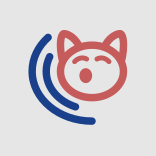
What does it take for a SaaS service to succeed in a competitive environment? Competitive prices? Unique features? A coherent unique selling proposition? A talented team? Good marketing?
There are many answers to this question, and none of it is technically wrong. But there's one criterion that's more important than any other: User engagement. High engagement forms the backbone of a SaaS business. A reliable stream of revenue, low client turnover rate, high CLV, and much more are all conditioned on high engagement.
But what exactly is engagement? Why is it so important? How do you calculate it? Read this article to get answers to these questions and more!
What Is User Engagement?
User engagement is an umbrella term that encompasses the myriad of ways clients and potential clients interact with your products and services. From reading through a landing page to using your services, these are all considered "engagement."
This inclusive definition of engagement allows companies to determine for themselves the metrics and data points they care about and the ones that are irrelevant to their business/industry.
Regardless of the metrics chosen, user engagement remains critical for a business, especially one with a SaaS model. Companies need to pay attention to it, learn how to measure it, and take steps to improve it.
Why Does User Engagement Matter for SaaS Companies?
Minimizing Client Turnover Rate
As a SaaS business, clients don't just represent one-time sales; they're continuous sources of revenue. Each client turnover represents income lost over multiple months and years, so you must minimize the turnover/churn rate.
Taking measures to increase user engagement is an excellent way to reduce the customer turnover rate. It improves customer buy-in and demonstrates the value of your service to the client. A customer who regularly uses your services and leverages the features you offer will have little reason to cancel their subscription or look for replacements.
Maximizing Client Lifetime Value
Client lifetime value refers to the value a client generates over their lifetime engagement with your company. CLV is important as not only does it indicate the duration of their subscription, but it also measures how many auxiliary services/features they purchase: Higher-tiered subscription, live support, one-time product purchase - these are all accounted for in the CLV metric.
Engaging users is a way to increase their lifetime value. By keeping the users' attention on your services, you increase the likelihood of additional purchases and further investment. If you have a large clientele, even a minor CLV increase can consequently impact long-term revenues.
Expanding Brand Reach
Expanding the reach of a business through word-of-mouth, marketing, and brand management is vital for the long-term success of a SaaS company. Sadly, trying to establish a brand and encouraging clients to recommend your services is a difficult, if not nigh impossible, task.
Improving user engagement can change this! As long as you keep your clients happy and engaged, they'll independently bring up your services to colleagues and social relations. With word-of-mouth marketing being far more effective at attracting and retaining clients, this is an advantage you can't afford to lose out on.
Bounce Rate
The rate at which users immediately leave your website without browsing any other landing pages or clicking on any forms/buttons is called the bounce rate. A high bounce rate is usually indicative of poor user interface and content.
Most users decide whether a website is worth their time in around five seconds. You need to make a good first impression if you want potential customers to check out what you have to offer.
None of these approaches is necessarily better than the others and they can be used in conjunction. Just make sure it makes sense for your industry and business environment.
User Retention Rates
An important dimension of user engagement is how adept is your business at retaining users. A high user retention rate is indicative of a successful business model capable of keeping clients happy.
Like conversion rate, there are a few ways to measure retention:
Number of Daily, Weekly, and Monthly Active Users
Measuring how many people use your services is relatively straightforward and gives you important insight into how you're performing at the moment and on a longitudinal scale.
For each service and key landing page, keep track of the active users on a daily, weekly, and monthly scale and pay attention to how the numbers change during key events (new features, updates, holidays, and more).
This data will not only help you measure user engagement, but it helps you understand how successful are changes and policies at engaging customers.
Stickiness
Stickiness, calculated by dividing DAU by MAU, is another important data point you can derive from the active user count. It measures how likely is for your customers to keep using your services over a long period.
SaaS, by virtue of the business model itself, has very high stickiness, and in some industries, it makes more sense to use weekly and quarterly active users to calculate stickiness. Nevertheless, it is still an important data point for investors and managers alike!
Product/User Engagement Score
There's not an agreed-upon definition that outlines what a "User Engagement Score" exactly entails, but this flexibility is why this metric is both useful and widely adopted.
User Engagement Score is a combination of several metrics to holistically and comprehensively measure user engagement and distill it down to a single score that can be tracked, communicated to investors, and relied on in company decision-making.
Learning which metrics should be part of the score and how they should be weighed is critical. Getting an equation right that can adequately track engagement levels requires in-company research, an understanding of your customer base, and fine-tuning over several months to years.
5 Ways to Improve User Engagement
#1 Integrate User Engagement Metrics Into Business Processes and Decisions
Analyzing and measuring user engagement isn't enough. It doesn't matter how much data you collect if your company doesn't actively take them into account, integrate them into its decision-making, and take concrete steps to improve it.
When (re)designing your landing pages, when introducing new services, and when making changes to existing products, you need to consider how it impacts user engagement and what you can tweak to attract new customers and get existing ones reinvested.
#2 Create a Comprehensive Onboarding Process
First impressions matter. Whether it is the first time a potential client has visited your website or they've just signed up for a free trial, you need to have concrete procedures in place that ensure you leave a good impression, demonstrate your services' value, and convert them into regular customers.
The process needs to be multifaceted and comprehensive to target people at all stages of the customer journey:
- The product/service landing pages need to be clear, outline their unique selling propositions, and prominently feature sign-up/purchase buttons.
- The UI/UX of the app/service needs to be self-evident with helpful (but skippable) tutorials for first-time users going over all key features.
- Comprehensive documentation and an FAQ section are essential to converting high-value customers and showcasing more niche features/use cases relevant to subsets of your clients.
#3 Research Third-party Tools and Software
Measuring, tracking, and increasing user engagement isn't a simple task. It requires keeping track of several key metrics, deriving actionable insights from the data, constantly refining and expanding your approaches, and interacting with your customer base in various ways. It is an arduous task that needs to become a core part of your business.
Finding ways to streamline and improve the process will be key to keeping costs down and improving user engagement, and one of the best ways to do that is by using third-party tools and software.
Take our excellent Release Notice Software as an example: It lets you keep your users updated on the latest features and services, gauge their reactions in real time, and interact with them through highly customizable in-app messaging. It gives you all the tools you need to measure user engagement and improve it.
There's no sense in reinventing the wheel. There are tools out there that make the process trivial, and you should take advantage of them.
#4 Increase Customer Buy-in
For SaaS businesses, acquiring new users is expensive and difficult, especially if their services cater to other businesses (B2B). Ensuring your clients are happy with your services and have fully bought in is key to increasing user engagement.
To this end, there are a few approaches you can take. You can create loyalty programs that reward users for engaging with your services, offer and lock more comprehensive features behind higher tiers, and regularly communicate with long-time customers to ensure they're satisfied with your services and the direction of your company.
How to increase buy-in will largely depend on the sector you operate in and the types of clients you have. This is ultimately about increasing your clients' trust in your company, and that needs an individual approach.
#5 Regularly Update Your Services
SaaS companies operate in very competitive environments. Not only do they need to offer comprehensive services and have unique selling propositions, but they also need to constantly make changes and introduce new features if they don't want to get outclassed by their competitors.
Introducing new features and updating existing services is also a great way to generate publicity and grab the attention of existing customers. Both through third-party coverage and through release notes and changelogs, you can let users know what they're missing out on and encourage them to reengage with your services.
Conclusion
An engaged customer is happier and more committed, which helps generate more revenues for your business. SaaS services need engaged customers to thrive.
Sadly, measuring and improving engagement isn't an exact science. It needs commitment, research, and incremental improvement. This article gave you all the tools you need to create a basic framework that tracks and enhances user engagement.
- Releasecat Team

STREAMLINE YOUR SOFTWARE RELEASE NOTES WITH RELEASECAT
Also check out our other articles:

